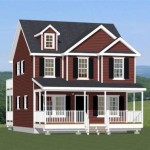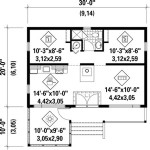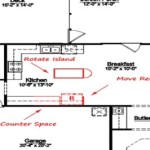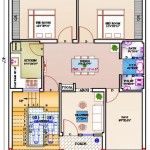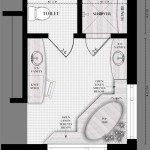House Plans for Sloped Lots with Front Yard Emphasis
Building a home on a sloped lot presents unique design challenges and opportunities. When the slope is located in the front yard, careful consideration must be given to the home's aesthetics, accessibility, and overall integration with the surrounding landscape. Effective house plans for such properties necessitate a tailored approach that leverages the slope's characteristics to create a visually appealing and functionally practical dwelling. This article explores critical factors in designing house plans specifically for sloped lots with a prominent front yard, highlighting design strategies and considerations for successful execution.
Understanding the Slope and Site Characteristics
Before embarking on any house plan, a thorough assessment of the lot's slope is paramount. This involves accurately measuring the degree of the slope, identifying areas of steepness or gentle incline, and understanding the soil composition. The direction the slope faces (north, south, east, or west) influences the amount of sunlight received throughout the day, impacting heating and cooling needs. Furthermore, existing vegetation, drainage patterns, and potential erosion risks should be documented. This comprehensive site analysis forms the foundation for informed design decisions.
The slope's gradient directly impacts the type of foundation suitable for the home. For milder slopes, a traditional slab-on-grade or crawl space foundation might be viable. However, steeper slopes may necessitate more complex solutions such as a daylight basement, a walkout basement, or even a tiered foundation using retaining walls. The selection of the foundation is not solely driven by the slope; it also depends on local building codes, budget constraints, and personal preferences regarding basement usage. Understanding the soil composition is also crucial, as different soil types have varying load-bearing capacities and susceptibility to erosion. A geotechnical engineer should be consulted to assess the soil's properties and recommend appropriate foundation designs.
Beyond the physical characteristics, consider the aesthetic integration of the home with the surrounding environment. Preserving mature trees and incorporating native landscaping not only enhances the home's curb appeal but also helps stabilize the slope, prevents erosion, and reduces stormwater runoff. Analyzing the views from the site is equally important. Capitalize on the elevated position to capture panoramic vistas, while also considering privacy from neighboring properties. The orientation of the home on the lot should be optimized to maximize solar gain during the winter months and minimize it during the summer, thereby reducing energy consumption.
Design Strategies for Sloped Front Yards
Several design strategies can effectively address the challenges posed by a sloped front yard. One common approach is to utilize a split-level or split-foyer design. These designs incorporate multiple levels that step up or down with the natural terrain, minimizing the amount of excavation and retaining walls required. Split-level homes often feature a partially submerged lower level that can be used as a garage, a recreation room, or additional living space. Split-foyer designs typically have a small entry area at ground level with short flights of stairs leading to the main living areas above and below. These designs are particularly well-suited for moderately sloped lots.
Another strategy involves creating a tiered landscape using retaining walls. Retaining walls can be constructed from various materials, including concrete blocks, natural stone, or treated timber. These walls create level terraces that can be used for gardens, walkways, or outdoor living spaces. The tiered landscape not only enhances the aesthetic appeal of the front yard but also helps to manage stormwater runoff and prevent erosion. The design of the retaining walls should be carefully considered to ensure structural stability and visual harmony with the home's architecture.
For steeper slopes, a "pier and beam" foundation can be employed. This type of foundation involves supporting the home on a series of vertical piers or columns that are anchored into the ground. The space beneath the home can be left open or enclosed to create a crawl space or a garage. Pier and beam foundations are particularly suitable for areas with unstable soil or a high water table. They also allow for greater flexibility in the design of the home, as the structure is not directly supported by the slope.
Integrating the garage into the design is an important consideration for sloped lots. A side-entry garage or a detached garage can minimize the visual impact of the garage on the front facade. Alternatively, the garage can be incorporated into the lower level of a split-level or walkout basement. Careful planning is required to ensure that the driveway is accessible and does not create a visual barrier between the home and the street. The driveway should be designed to follow the natural contours of the land, minimizing the amount of grading and retaining walls required.
Accessibility and Functionality Considerations
Designing for accessibility is crucial, particularly when dealing with a sloped front yard. Consider incorporating ramps or gradual walkways instead of steep steps. The Americans with Disabilities Act (ADA) provides guidelines for accessible design, including requirements for slope, width, and handrails. Even if not legally required, incorporating accessibility features can benefit homeowners of all ages and abilities.
Proper drainage is essential for preventing water damage and erosion. The landscape should be graded to direct water away from the foundation. Gutters and downspouts should be installed to collect rainwater and discharge it to a designated drainage area. French drains can be used to collect subsurface water and prevent it from accumulating around the foundation. Consult with a landscape architect or civil engineer to develop a comprehensive drainage plan that addresses the specific challenges of the site.
The entryway should be designed to be welcoming and inviting, despite the slope. Consider incorporating a covered porch or portico to provide shelter from the elements. The front door should be clearly visible and easily accessible. Landscaping can be used to soften the slope and create a sense of privacy and enclosure. Lighting is also important for safety and aesthetics. Well-placed lighting fixtures can illuminate walkways, highlight architectural features, and deter crime.
Outdoor living spaces, such as decks, patios, and balconies, can be integrated into the design to take advantage of the views and create a connection with the surrounding landscape. These spaces can be designed to be level, even on a sloped lot, by using retaining walls or elevated platforms. Outdoor kitchens, fire pits, and seating areas can enhance the functionality and enjoyment of these spaces.
The selection of building materials should be carefully considered to ensure durability and compatibility with the climate and site conditions. Materials such as stone, brick, and concrete are naturally resistant to erosion and weathering. Wood should be treated to prevent rot and insect infestation. Consider using sustainable building materials, such as recycled content products and locally sourced materials, to minimize the environmental impact of the home.
Designing house plans for sloped lots with prominent front yards requires a holistic approach that considers the site's unique characteristics, integrates the home with the surrounding environment, and addresses accessibility and functionality concerns. By carefully considering these factors, it is possible to create a beautiful and functional home that maximizes the potential of the property.

Hillside And Sloped Lot House Plans

Hillside And Sloped Lot House Plans

Sloping Lot House Plan 1162

Barndominium With Walkout Basement Plans Blog Floorplans Com

Spacious 3 Bedroom Home With Luxurious Features And Expansive Living Areas

Best Simple Sloped Lot House Plans And Hillside Cottage

Sloping Lot Contemporary Style House Plan 6891 The Cambridge

Shady Slope Rustic Home Plan 126d 1005 House Plans And More

The Best House Plans For Sloped Lots And Narrow Houseplans Blog Com

Best Simple Sloped Lot House Plans And Hillside Cottage

